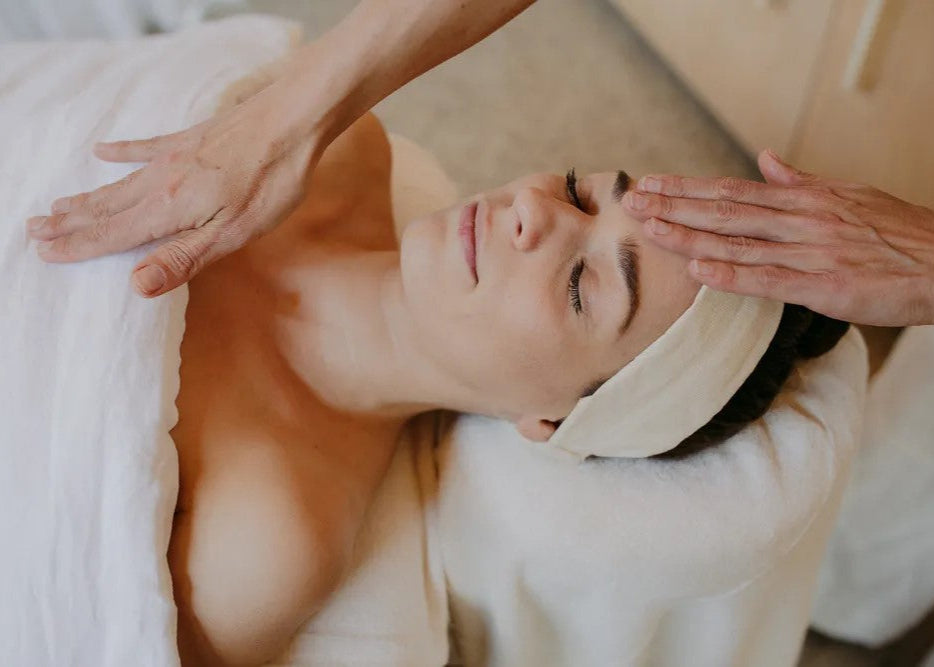Australians may be unknowingly exposing themselves to “forever chemicals” – toxic, persistent substances like PFAS – in everyday products. While France and other European nations are forging ahead with bans on these chemicals in cosmetics and consumer goods, Australia’s regulations are playing catch-up. In this article, we investigate how Australia is lagging behind France and Europe in restricting PFAS, and why it’s more urgent than ever for Australians to protect themselves by choosing certified organic skincare.
What Are “Forever Chemicals” (PFAS) and Why Are They Dangerous?
“Forever chemicals” is a nickname for PFAS (per- and polyfluoroalkyl substances), a large family of synthetic chemicals known for their extreme durability. There are over 10,000 PFAS chemicals, used in products to resist water, stains, and heat (New Zealand to ban PFAS ‘forever chemicals’ in cosmetics in 2026 | PFAS | The Guardian) ( France bans PFAS in cosmetics and consumer textiles | SAFE – Safe Food Advocacy Europe). They earned the label “forever chemicals” because they do not break down naturally, persisting in the environment and our bodies virtually indefinitely (New Zealand to ban PFAS ‘forever chemicals’ in cosmetics in 2026 | PFAS | The Guardian). This persistence means every bit of PFAS released will remain for generations, accumulating in soil, water, wildlife, and people.
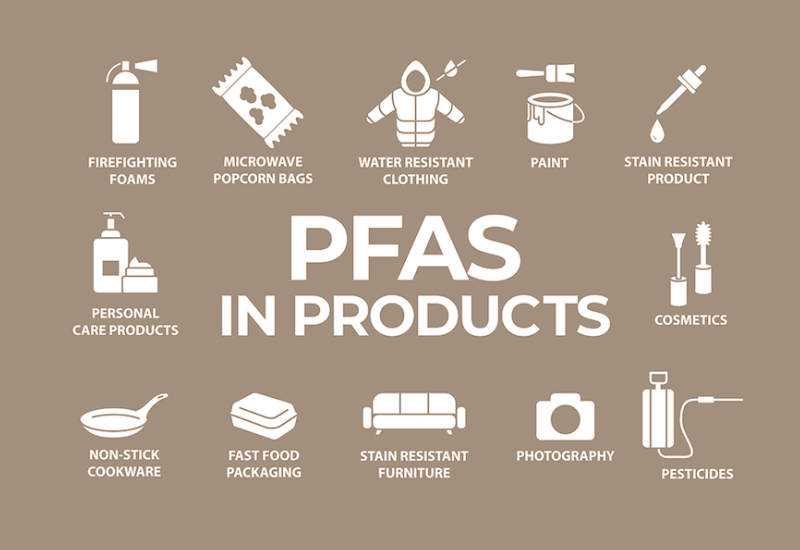
Such ubiquity comes with serious risks. PFAS have been detected in drinking water, rainwater, sea spray, and even human blood around the world (New Zealand to ban PFAS ‘forever chemicals’ in cosmetics in 2026 | PFAS | The Guardian). Scientists are increasingly linking PFAS exposure to major health issues: studies associate PFAS with certain cancers, developmental problems (like birth defects), hormone disruption, immune system suppression, liver and kidney damage, and high cholesterol (New Zealand to ban PFAS ‘forever chemicals’ in cosmetics in 2026 | PFAS | The Guardian) (Blogs | What are forever chemicals? How to avoid them with non-toxic skincare). In fact, many PFAS are suspected carcinogens – for example, some have been linked to liver damage as well as kidney and testicular cancer (France bans PFAS in cosmetics and consumer textiles | SAFE – Safe Food Advocacy Europe). While research is ongoing, these findings have led experts to warn that there may be “no safe level of exposure” to PFAS in humans.
Another troubling aspect is how PFAS move through our environment. Once used in a product, they can leach out and contaminate air, dust, and especially water. PFAS are water-soluble, so they easily spread from their original source, polluting rivers, groundwater, and even the ocean (Australia to introduce national controls for PFAS ‘forever chemicals’). For example, PFAS from disposed products or firefighting foam can run off into waterways and persist in drinking water supplies (Firefighting foam spilled at Brisbane airport enters river and kills fish | Toxic firefighting chemicals | The Guardian). Because they don’t break down, PFAS can bioaccumulate – meaning fish, wildlife, and humans continually build up PFAS in their bodies over time. This global and long-term contamination is why environmental advocates consider PFAS both a public health and an environmental crisis.
How do PFAS end up in our daily lives?
Unfortunately, very easily. PFAS have been used in countless consumer products for decades. In the home, they’re found in non-stick cookware, waterproof fabrics, upholstery and carpet treatments, food packaging, and even cosmetics and skincare. In makeup and skincare, PFAS compounds may be added to make products longer-lasting, waterproof, or to create a silky smooth finish (New Zealand to ban PFAS ‘forever chemicals’ in cosmetics in 2026 | PFAS | The Guardian). For instance, a PFAS-based coating can make mascara smudge-proof or foundation more spreadable. They’re also used in some sunscreens and lotions. The Australian government acknowledges that everyday items like “carpet and upholstery protective sprays, cosmetics, sunscreens and some non-stick cookware” are common sources of PFAS exposure for people (Australia among hotspots for toxic ‘forever chemicals’, study of PFAS levels finds | PFAS | The Guardian).
(File:A water droplet DWR-coated surface2 edit1.jpg - Wikipedia) A water droplet beading up on fabric treated with PFAS-based water repellent. “Forever chemicals” like PFAS are used to create non-stick, waterproof coatings, but they persist in the environment and our bodies (Per- and polyfluoroalkyl substances - Wikipedia).
The problem is that when we use these PFAS-containing products – applying them to our skin or washing them off – the chemicals can absorb into our bodies or rinse down the drain into the environment. Even low levels in each product add to our cumulative exposure, since PFAS remain in our blood. Over time, they can reach concentrations that pose health risks. This is why scientists caution that we are likely underestimating the total PFAS burden around us (Australia among hotspots for toxic ‘forever chemicals’, study of PFAS levels finds | PFAS | The Guardian). With evidence of harm mounting, many governments are taking action to eliminate these substances from consumer goods.
France and Europe Are Banning PFAS in Consumer Products
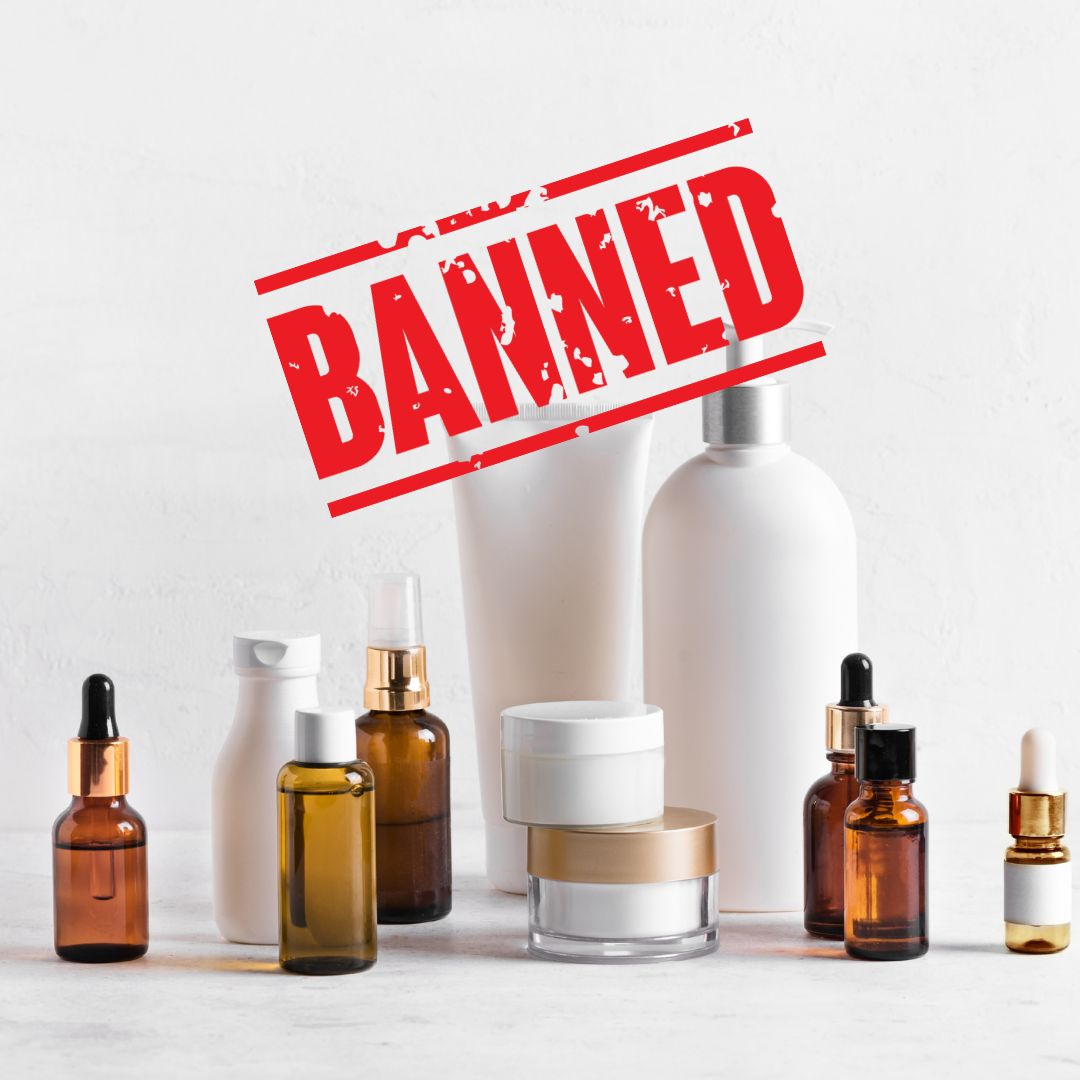
Across Europe, regulators have responded to the PFAS threat with aggressive policies – and France is at the forefront. French lawmakers passed a sweeping law in February 2025 to ban PFAS (“forever chemicals”) from numerous consumer products, including cosmetics (France bans PFAS in cosmetics and consumer textiles | SAFE – Safe Food Advocacy Europe). The law prohibits the manufacture, import, export, and sale of all cosmetics, clothing, and footwear containing PFAS (with exemptions only for critical protective gear like firefighting suits) (France bans PFAS in cosmetics and consumer textiles | SAFE – Safe Food Advocacy Europe) (France bans PFAS in cosmetics and consumer textiles | SAFE – Safe Food Advocacy Europe). This nationwide ban takes effect at the start of 2026, making France one of the first countries to remove PFAS from beauty and personal care items. Lawmakers pushed this reform because PFAS are “highly toxic, very persistent and hard to remove from the environment, posing serious risks to human health,” as France’s National Assembly concluded ( France bans PFAS in cosmetics and consumer textiles | SAFE – Safe Food Advocacy Europe). In short, French authorities decided the cost of allowing PFAS in everyday products was simply too great.
France is not alone. The European Union as a whole is moving toward stricter regulation of PFAS. EU regulators have proposed a blanket ban on roughly 10,000 PFAS chemicals across all 27 member countries (News France Adopts Comprehensive PFAS Ban with Specific Implement), which would be one of the most comprehensive chemical bans ever implemented. This proposal, submitted by five EU countries (including Germany and Denmark), aims to eliminate virtually all PFAS uses – from industrial applications to consumer goods – with only narrow exemptions for essential uses without alternatives (News France Adopts Comprehensive PFAS Ban with Specific Implement) (EU proposal would ban 10,000 PFAS). The EU’s rationale is clear: a “business-as-usual” scenario would result in millions of tons of PFAS polluting the environment in coming decades, so a broad restriction is the most effective way to protect public health (EU proposal would ban 10,000 PFAS). The EU is currently reviewing this proposal, with a final decision expected by 2025 and the potential phase-out of PFAS by the end of the decade (France adopts ban on PFAS in consumer products).
Even ahead of an EU-wide rule, several European nations have taken initiative. Denmark was the first, banning PFAS in food packaging back in 2020, and it will extend that ban to all consumer textiles, footwear and outdoor gear by July 2026 (France adopts ban on PFAS in consumer products). (News France Adopts Comprehensive PFAS Ban with Specific Implement). Sweden, the Netherlands, Germany, and others have also backed strong restrictions. European authorities are treating PFAS with urgency, invoking the precautionary principle: remove the chemicals wherever possible now, rather than waiting for more damage to be done. As a result, European consumers will soon enjoy cosmetics and products free of PFAS, significantly reducing their daily exposure.
It’s worth noting that even Europe’s interim steps put Australia to shame. For example, the EU recently placed strict limits on PFHxA (a PFAS compound) and related substances in items like food packaging, cosmetics and textiles (France bans PFAS in cosmetics and consumer textiles | SAFE – Safe Food Advocacy Europe). And while France’s ban covers makeup and lotions by 2026, New Zealand – a fellow Asia-Pacific country – has also announced a similar ban on PFAS in cosmetics starting in 2026 (New Zealand to ban PFAS ‘forever chemicals’ in cosmetics in 2026 | PFAS | The Guardian). New Zealand’s Environmental Protection Authority chose to act out of precaution, citing international evidence linking PFAS to cancer and immune harms and noting that even if only a small number of cosmetics contain PFAS, it’s prudent to eliminate any unnecessary exposure (New Zealand to ban PFAS ‘forever chemicals’ in cosmetics in 2026 | PFAS | The Guardian) (New Zealand to ban PFAS ‘forever chemicals’ in cosmetics in 2026 | PFAS | The Guardian). The contrast is becoming clear: In Europe (and even New Zealand), government action is removing PFAS from consumer products to protect people. So where does Australia stand?
Australia’s Response: Is Australia Lagging Behind?
In Australia, awareness of PFAS has grown – especially due to contamination scandals (like PFAS-laden firefighting foams polluting communities). Yet when it comes to regulating PFAS in consumer products and cosmetics, Australia trails well behind Europe’s proactive approach. Currently, there is no broad ban on PFAS in cosmetics, skincare, or most consumer goods in Australia. You read that correctly: the moisturiser, foundation or lipstick you buy in Australia could contain PFAS, because there is no law saying it can’t. Australian regulators have so far focused only on a few of the oldest, most notorious PFAS chemicals (the ones already largely phased out elsewhere), and even those restrictions have been slow to arrive.
As of now, Australia’s plan is to ban just three PFAS compounds – PFOS, PFOA, and PFHxS – by July 2025 (Australia to introduce national controls for PFAS ‘forever chemicals’). These are long-chain PFAS that were widely used in the past (for example, PFOA was used to make Teflon cookware). The government proposes to list these three chemicals under a regulation that prohibits their import, manufacture, or use, effectively removing them from products (Australia to introduce national controls for PFAS ‘forever chemicals’). This step aligns with global agreements (the Stockholm Convention on persistent pollutants) and is certainly a positive move. However, it addresses only a tiny fraction of the PFAS problem. Experts point out that Australian regulations focus on just these 3 “historical” PFAS, while approximately 14,000 other PFAS exist – many of which are now being used as substitutes (). In other words, manufacturers can switch to unregulated PFAS variants, and those are entirely legal in Australia. There is no comprehensive policy targeting the PFAS class as a whole, unlike the broad bans pursued in Europe.
This regulatory gap means that PFAS-containing cosmetics and other goods can still be sold in Australia, as long as they don’t contain PFOS, PFOA or PFHxS specifically. For instance, a “long-wear” foundation might use a newer fluorinated compound not on Australia’s minimal banned list – and nothing currently stops it from being used. Australia has not followed France’s lead in banning PFAS from makeup and skincare, nor set any binding timeline to do so. Australian authorities have also been slow to tackle PFAS in other consumer products like food packaging or textiles, despite these being major sources of exposure (). In fact, a parliamentary brief bluntly criticized Australia’s PFAS policy as “woefully inadequate,” noting the failure to address imported products such as makeup, clothes, and packaging that contain PFAS ().
Why the slow response? Part of the issue is that Australian regulators have taken a cautious stance on the evidence of harm. The government’s own PFAS Expert Health Panel in 2018 concluded there was only “limited” evidence of health effects in humans and “no current evidence of human disease or other clinically significant harm” from PFAS at environmental exposure levels (Australia among hotspots for toxic ‘forever chemicals’, study of PFAS levels finds | PFAS | The Guardian). Australian health guidelines for PFAS in drinking water have consequently been set much more lenient than in other countries. (For example, Australia’s allowable limit for one PFAS in water is 560 nanograms per liter, whereas the U.S. health advisory limit is just 4 nanograms (Australia among hotspots for toxic ‘forever chemicals’, study of PFAS levels finds | PFAS | The Guardian) – a difference of two orders of magnitude.) This less urgent view may have contributed to regulatory inaction on consumer products. The emphasis has been on cleaning up major contamination sites (like Defence bases) and phasing out firefighting foams, rather than on everyday products.
The result is that Australia is lagging behind international best practice. Europe is on track to eliminate PFAS from cosmetics and many goods within a few years, and New Zealand will have PFAS-free cosmetics by 2026 (New Zealand to ban PFAS ‘forever chemicals’ in cosmetics in 2026 | PFAS | The Guardian). Meanwhile, Australians could still be applying PFAS-laced products to their skin daily. The lack of Australian regulation creates an exposure gap: our population remains vulnerable to these chemicals through items that would be illegal in France or Denmark. It also means Australian companies have less incentive to reformulate products without PFAS, since there’s no domestic ban (whereas European brands are already innovating PFAS-free formulations to comply with new rules).
For Australian consumers concerned about this disparity, it raises an important question: What can you do to protect yourself, today, from PFAS and other “forever chemicals” in your cosmetics and skincare? One clear answer is to choose certified organic products. In the absence of strong regulatory protection, consumers can take matters into their own hands by opting for brands and products that are independently verified to be free from harmful synthetic chemicals.
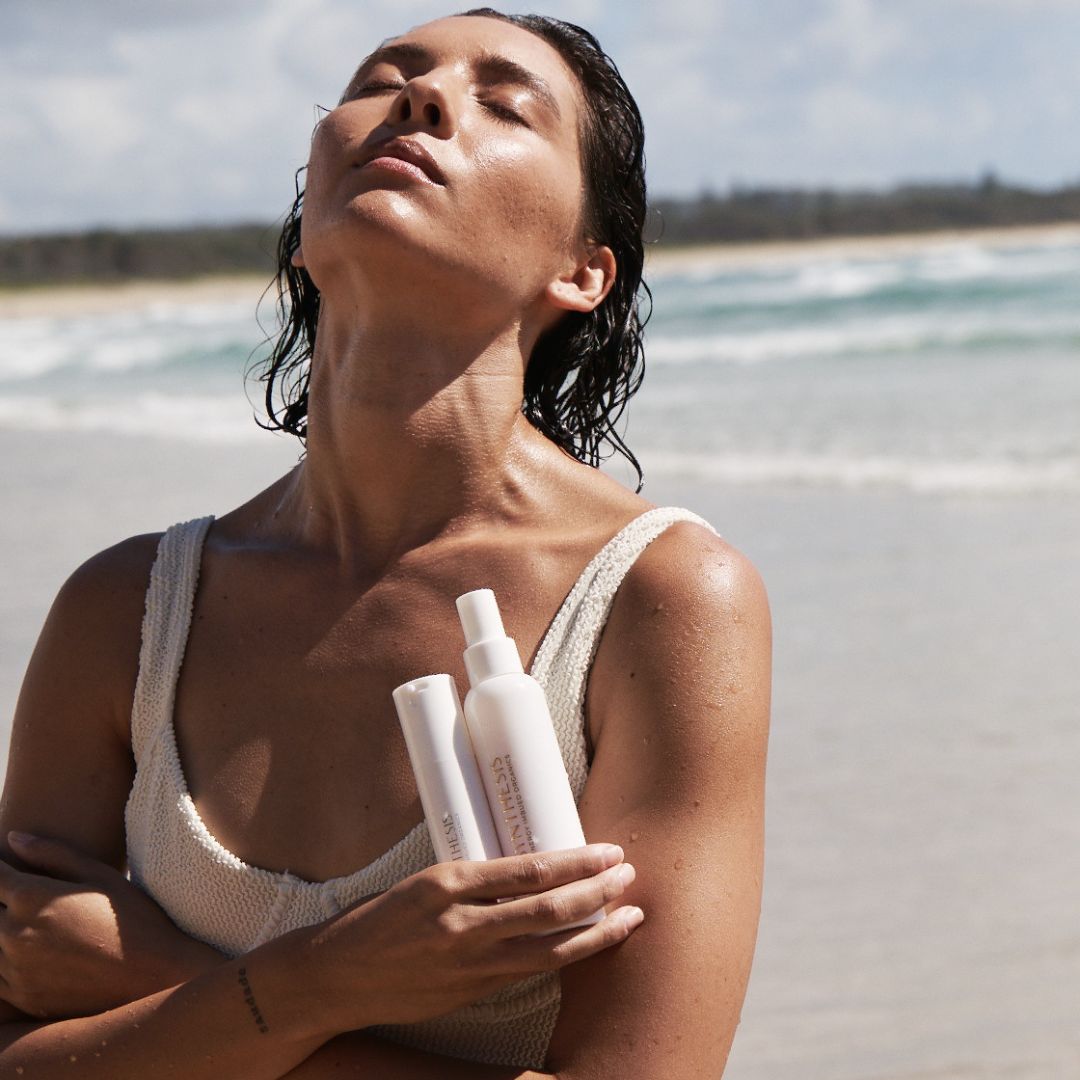
Choosing Certified Organic Skincare – Your Healthier, Safer Alternative
When faced with uncertain chemical safety, voting with your wallet is a powerful strategy. Choosing certified organic skincare is more important than ever for Australians who want to avoid “forever chemicals” and other questionable additives. Why organic? Because certified organic products are made without synthetic chemicals – including PFAS, parabens, phthalates, and other industrial compounds that conventional brands often use. Organic standards prioritize natural, plant-based ingredients and explicitly prohibit the types of petrochemical derivatives that PFAS belong to. In short, if a skincare product is truly certified organic, it should not contain PFAS by definition. Opting for organic gives you an extra layer of assurance that your lotion or lipstick isn’t a vehicle for toxic pollutants.
Here are some compelling reasons why switching to certified organic skincare can safeguard your health and the environment
- No Toxic “Forever Chemicals”: Certified organic skincare products must meet strict ingredient standards, meaning no PFAS or other synthetic chemicals that don’t readily biodegrade. This eliminates your exposure to hidden PFAS that might be lurking in conventional cosmetics. You’ll be avoiding the ingredients that have been linked to cancer, hormone disruption, and immune effects, thereby protecting your long-term health (France bans PFAS in cosmetics and consumer textiles | SAFE – Safe Food Advocacy Europe) (Blogs | What are forever chemicals? How to avoid them with non-toxic skincare). With organic products, you can apply that cream or makeup knowing it’s free from the “forever” toxins we’ve been warned about.
- Safer for Your Skin and Body: Organic products tend to use gentle, naturally derived ingredients that are biocompatible with our bodies. They are often formulated without harsh preservatives, artificial fragrances, or other irritants as well. This means less risk of allergic reactions or skin sensitivity and reduced chemical stress on your body. Over time, minimizing contact with the myriad synthetic chemicals in mainstream cosmetics can lower your body’s chemical burden. When you use products without PFAS and other pollutants, you’re not adding to the accumulation of toxins in your blood and organs. As one expert noted, using clean products helps avoid “stresses on your body” and reduces the potential for disease in the long run (Blogs | What are forever chemicals? How to avoid them with non-toxic skincare).
- Better for the Environment: Every product we rinse off or throw away doesn’t just vanish – it goes down the drain or into a landfill, potentially leaching into the environment. Choosing organic skincare is also an eco-conscious decision. Natural and organic ingredients break down more easily in the environment, whereas synthetic chemicals like PFAS do not. By avoiding PFAS-containing products, you prevent those persistent pollutants from washing into waterways. Consider that when you wash off PFAS-laden sunscreen or makeup, those chemicals can pass through water treatment and end up polluting rivers and oceans (Blogs | What are forever chemicals? How to avoid them with non-toxic skincare). In contrast, organic products use biodegradable ingredients that won’t contaminate ecosystems. Many organic brands also focus on sustainable sourcing and biodegradable packaging. Thus, buying organic supports a cleaner planet, free from “forever chemical” contamination.
- Higher Standards and Transparency: A product with a reputable organic certification (such as COSMOS Organic or Australian Certified Organic (ACO)) has undergone rigorous auditing of its ingredients and processes. These certifications aren’t given lightly – manufacturers must prove their products meet all criteria, from a high percentage of organic content to excluding prohibited substances. For consumers, this translates to peace of mind and trust. You don’t have to second-guess the ingredient list or decode cryptic chemical names – the certification logo is a shorthand for “safe and natural.” In a market full of greenwashing, where even products labeled “natural” or “clean” might hide synthetic additives, a certified organic label cuts through the noise. It guarantees that an independent body has verified the product is genuinely free of the nasties you want to avoid. (Be aware that terms like “natural” are unregulated – even a product claiming to be natural could still contain PFAS unless it’s truly certified (What are PFAs and why are they used in Cosmetics? – Runway Room Cosmetics).) By supporting certified organic brands, you also encourage the industry to raise its standards and move away from toxic chemicals.(Sliced orange fruit on red ceramic bowl photo – Free Food Image on Unsplash) Natural ingredients and skincare: opting for certified organic products ensures your beauty routine is free from PFAS and other synthetic chemicals. Organic brands emphasize plant-based, biodegradable ingredients rather than industrial “forever chemicals.”
- Healthier for Future Generations: What we put on our bodies today doesn’t just affect us – it can impact our children and the environment they inherit. PFAS have even been found in cord blood and breastmilk, meaning our chemical exposures can be passed to babies. By eliminating these chemicals from your daily routine now, you help reduce the overall load of pollutants that future generations would be exposed to. Supporting organic products, which work in harmony with nature, helps promote a healthier world for our kids. It also sends a market signal pushing all companies to develop safer products, hopefully leading to broader change.
In summary, switching to certified organic skincare is a proactive step to protect your health in the face of Australia’s slow regulatory action on “forever chemicals.” It’s a way of saying: if the law won’t yet keep these toxics out of our products, we will do so ourselves. You deserve products that nourish you without risking your well-being or the environment.
Making the switch to organic skincare might sound overwhelming, but it’s easier than ever once you know what to look for. Here are some practical tips for Australian consumers to ensure you’re getting genuinely organic and safe products:
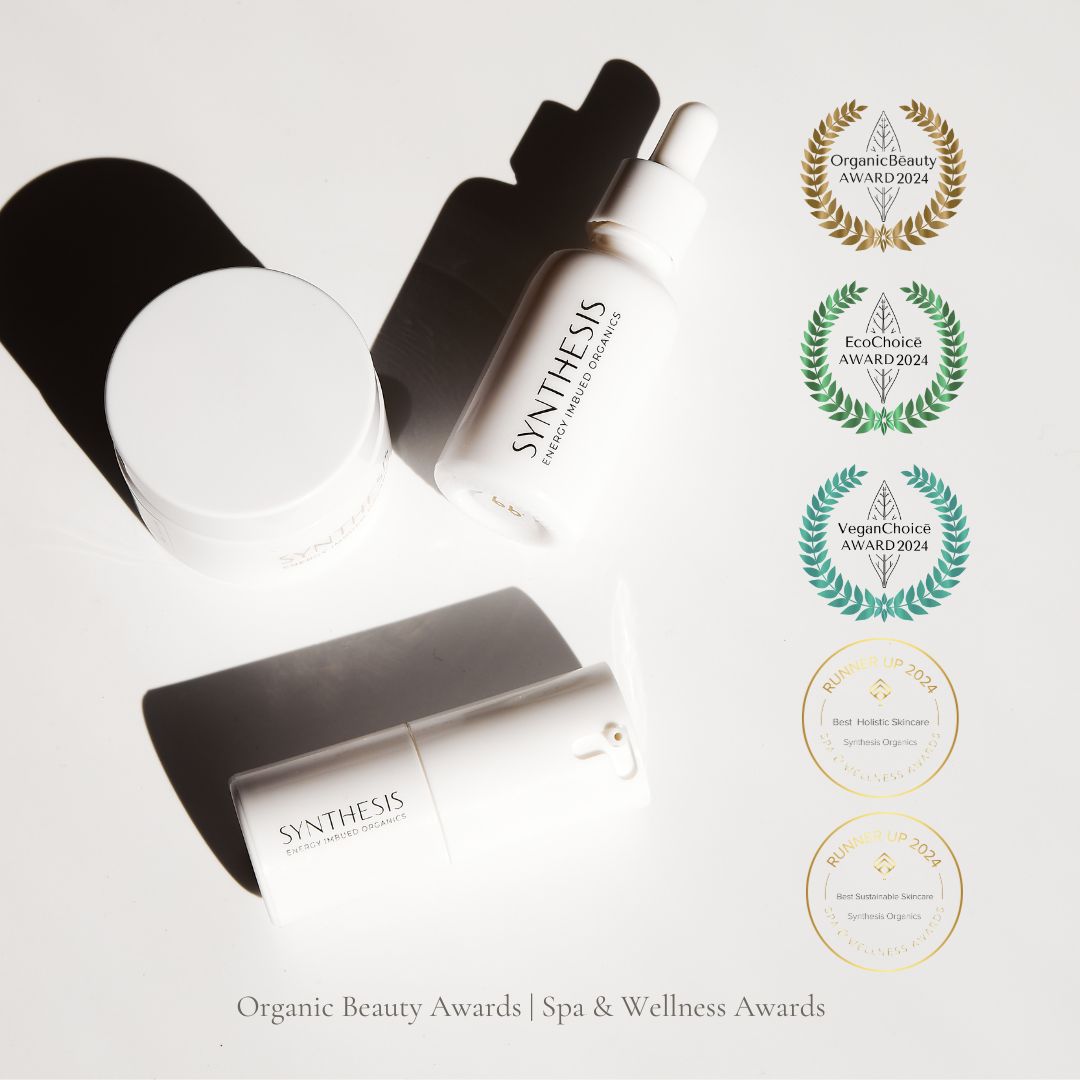
Look for Certified Organic Labels
Seek out products that carry a trusted organic certification logo. In Australia and globally, logos to trust include Australian Certified Organic (with the “ACO” bud logo), COSMOS Organic, USDA Organic, or NaTrue, among others. These certifications mean the product has met strict standards (often requiring 95%+ organic ingredients for the Organic label) and contains no prohibited chemicals. For example, a COSMOS-certified organic cream will not have synthetic silicones, petroleum derivatives or PFAS in its ingredients (Blogs | What are forever chemicals? How to avoid them with non-toxic skincare). Don’t be fooled by vague terms like “made with organic ingredients” without a logo – rely on third-party certification as proof.
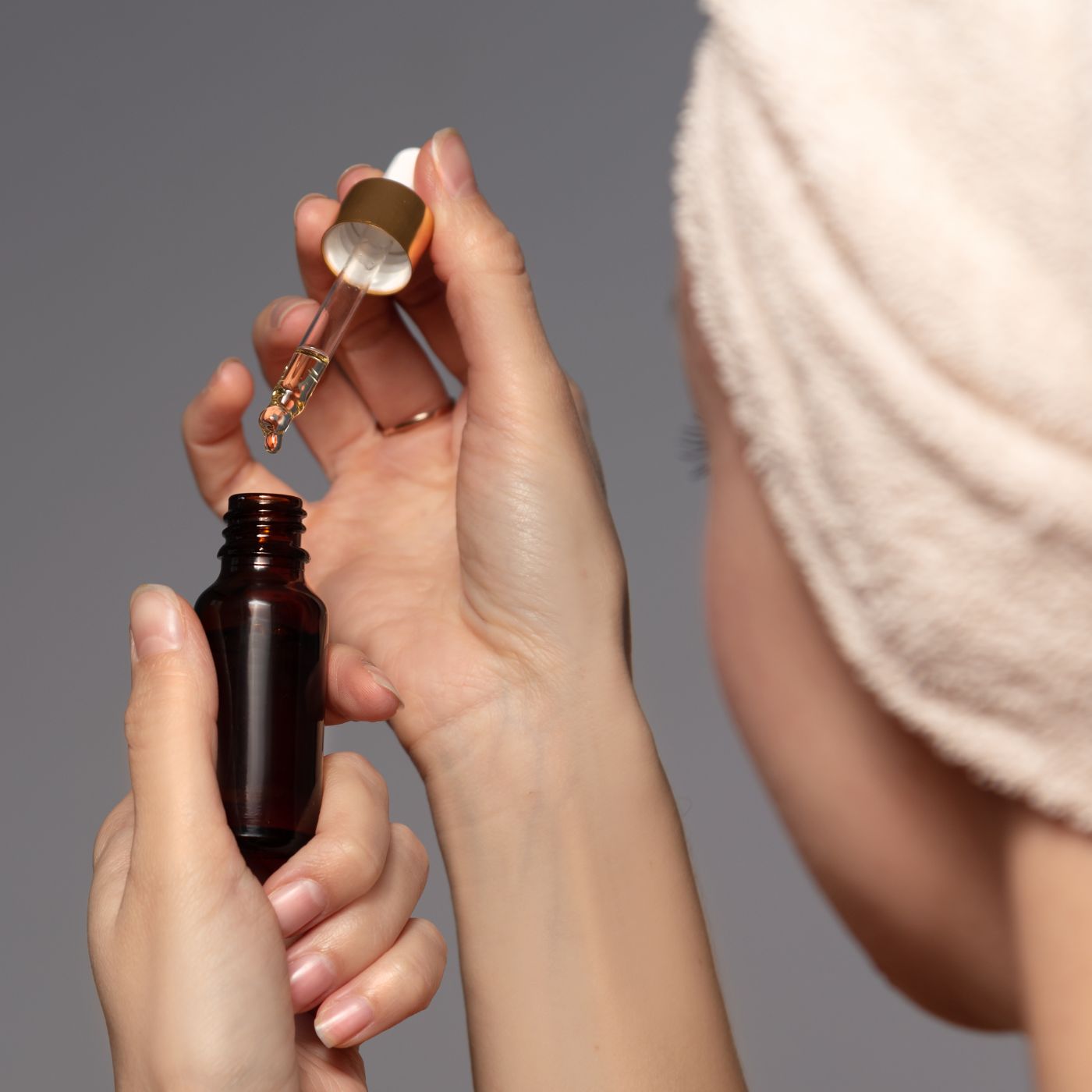
Read the Ingredient List
It’s always wise to scan the ingredients on your skincare. Avoid any ingredient names that include “fluoro” or “perfluor” – these are red flags for PFAS content (What products contain PFAS? The Unbelievable List of Everyday Products With This Forever Chemical). Common PFAS ingredients in cosmetics might appear as “PTFE” (polytetrafluoroethylene), “perfluorooctyl triethoxysilane”, “perfluorodecalin”, or similar terms. If you see anything with “fluoro” or “perfluor” in the name, put that product back on the shelf (What products contain PFAS? The Unbelievable List of Everyday Products With This Forever Chemical). By contrast, organic products will feature botanical names and recognizable plant-based components, not long synthetic chemical names.
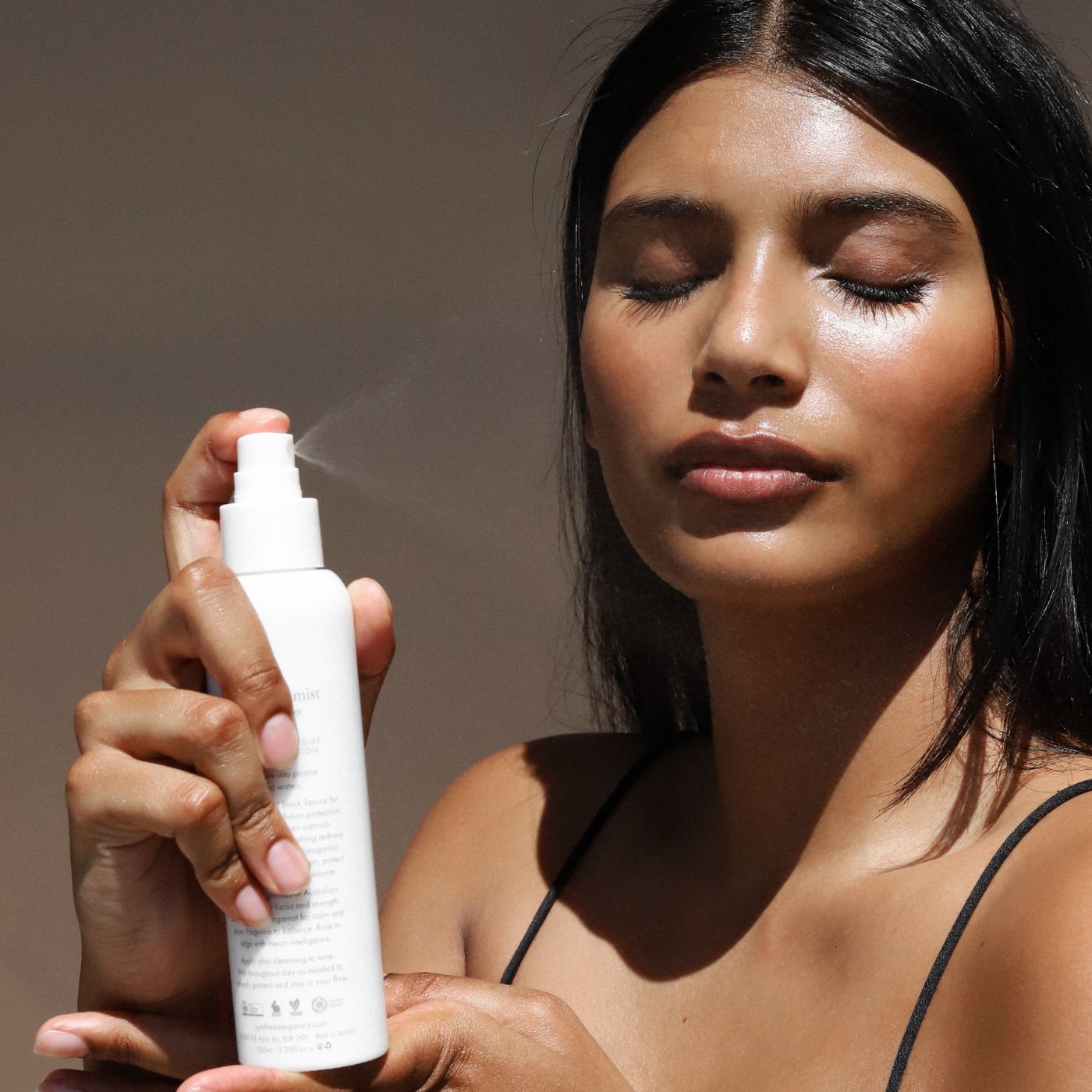
Be Wary of “Long-Lasting” or “Waterproof” Claims
Ironically, the very features that sound convenient (waterproof makeup, 24-hour wear foundation, stain-resistant lotion) could indicate the presence of PFAS. Manufacturers often use PFAS to achieve those properties. Unless the brand explicitly says it’s PFAS-free, exercise caution with products marketed as “waterproof,” “water-resistant,” “long-wear,” or “stay-put.” These are more likely to contain fluorinated ingredients for performance (What are PFAs and why are they used in Cosmetics? – Runway Room Cosmetics) (What products contain PFAS? The Unbelievable List of Everyday Products With This Forever Chemical). You might opt instead for organic or natural formulas and use a good setting powder or spray if you need longevity, rather than relying on chemical tricks.

Research the Brand
Stick to brands that are transparent about their ingredients and values. Many organic and natural skincare companies openly state that they exclude all PFAS and harsh chemicals. Some publish a “no nasties” list on their websites. If a brand is certified organic, that’s a good sign. You can also look up brands on resources like the Environmental Working Group’s Skin Deep database or other chemical safety databases to see their ratings. In Australia, check if the brand is listed by associations or advocacy groups focusing on toxin-free living. Brands that have a philosophy of safety will advertise that – if you have to dig too hard to find ingredient information, that’s a red flag.
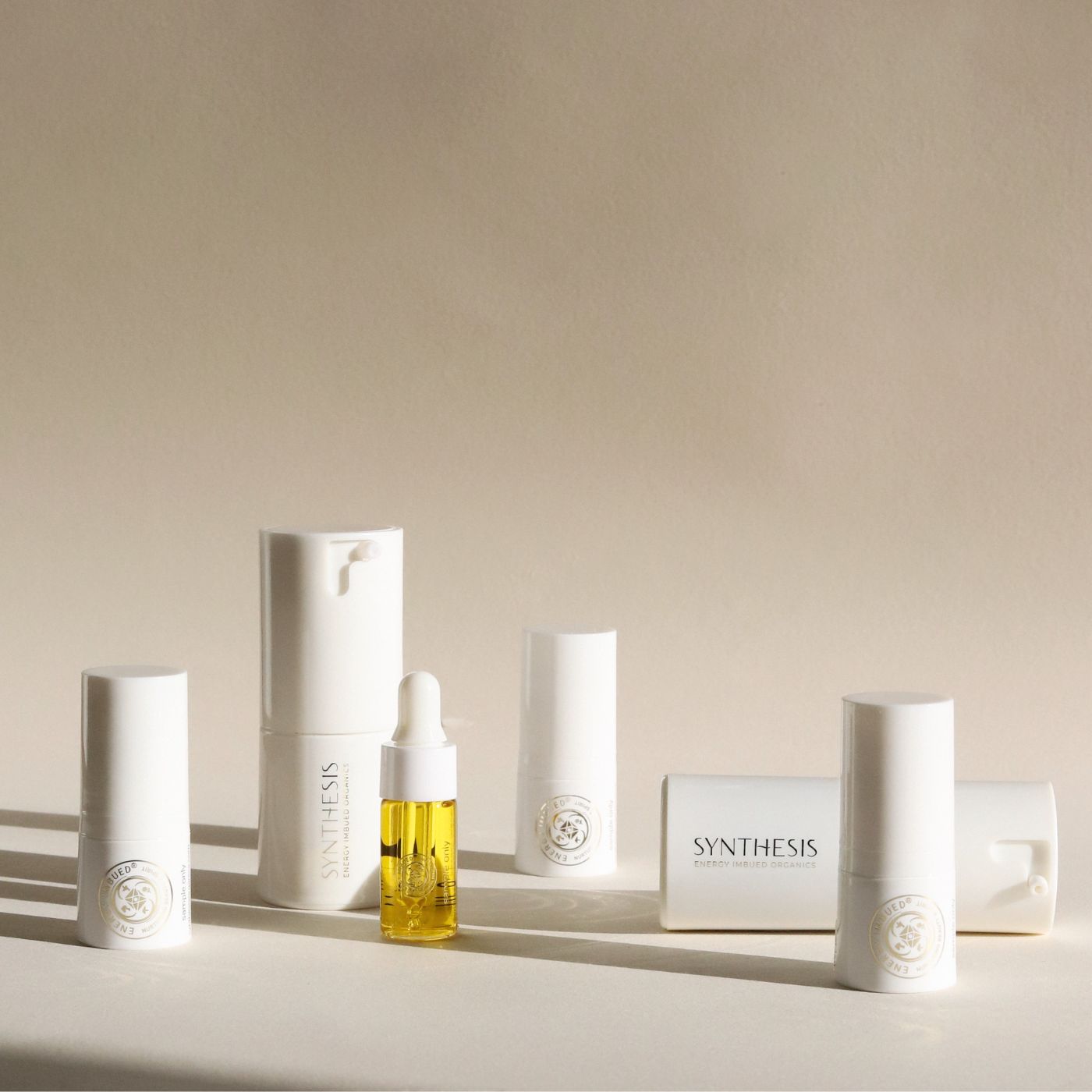
Use PFAS-Free Product Lists
Around the world, environmental health organizations have begun compiling lists of PFAS-free products and brands. For instance, the Green Science Policy Institute and ChemSec maintain catalogs of companies that have pledged not to use PFAS (What products contain PFAS? The Unbelievable List of Everyday Products With This Forever Chemical). A bit of online searching can yield recommendations for PFAS-free cosmetics. Some Australian retailers of eco-products (like Biome and others) curate only PFAS-free, toxin-free goods. Shopping from these retailers or referencing their blogs can simplify your choices, since they’ve done the vetting for you.
By following these steps, you can largely eliminate “forever chemicals” from your personal care routine, even before Australia’s regulators catch up to the science. Every time you choose a certified organic moisturizer or shampoo, you’re making a small but meaningful investment in your health. You’re also sending a message to the market that Australians won’t stand for toxic indifference.
Australia’s lag in banning PFAS in cosmetics and consumer products is a cause for concern – but it’s also a call to action for consumers. “Forever chemicals” pose real, long-term dangers to our health and environment, and waiting for sweeping government reforms could take years. In the meantime, choosing certified organic skincare is a powerful and immediate way to protect yourself and your family. It allows you to sidestep the harmful chemicals that regulators haven’t yet ruled out, and it supports companies that are doing the right thing by producing safe, sustainable products.
France and Europe have shown that a future without PFAS in our daily products is possible – and indeed, that it’s becoming the norm overseas. Australian consumers deserve the same level of safety. Until our policies catch up, we have the opportunity to align our purchasing choices with the highest safety standards. By embracing organic skincare and demanding toxin-free products, Australians can enjoy healthier lives with peace of mind, knowing we’re not lathering ourselves in pollution every morning. At the same time, we contribute to a cleaner environment and encourage more brands to go green.
Your skin is your largest organ, and what you put on it matters. In the face of “forever chemicals” that the government hasn’t yet forever banned, the smartest choice is to go organic and go natural. It’s better for you, better for the planet, and sends a clear message: we won’t compromise our well-being for the sake of chemical convenience. Make the switch to certified organic skincare today – it’s a simple step with powerful benefits, proving that Australians don’t need to wait for new laws to live cleaner, healthier, and chemical-free.
By educating ourselves and choosing safe, organic products, we take control of our health – and together, we can push Australia to catch up in eliminating these dangerous “forever chemicals” for good.
References
Sources: European Chemical Agency proposals and French legislation details (News France Adopts Comprehensive PFAS Ban with Specific Implement) (France bans PFAS in cosmetics and consumer textiles | SAFE – Safe Food Advocacy Europe); Guardian and SafeFood Advocacy reports on PFAS health risks (New Zealand to ban PFAS ‘forever chemicals’ in cosmetics in 2026 | PFAS | The Guardian) (France bans PFAS in cosmetics and consumer textiles | SAFE – Safe Food Advocacy Europe); Australian parliamentary brief on PFAS regulation gaps () (); Pinsent Masons analysis of Australia’s planned PFAS ban (Australia to introduce national controls for PFAS ‘forever chemicals’); Guardian Australia coverage of PFAS contamination and expert commentary (Australia among hotspots for toxic ‘forever chemicals’, study of PFAS levels finds | PFAS | The Guardian) (Australia among hotspots for toxic ‘forever chemicals’, study of PFAS levels finds | PFAS | The Guardian); Endota Organics expert insights on health impacts and the value of COSMOS organic certification (Blogs | What are forever chemicals? How to avoid them with non-toxic skincare) (Blogs | What are forever chemicals? How to avoid them with non-toxic skincare); Biome Eco Store guidelines for avoiding PFAS in products (What products contain PFAS? The Unbelievable List of Everyday Products With This Forever Chemical).



